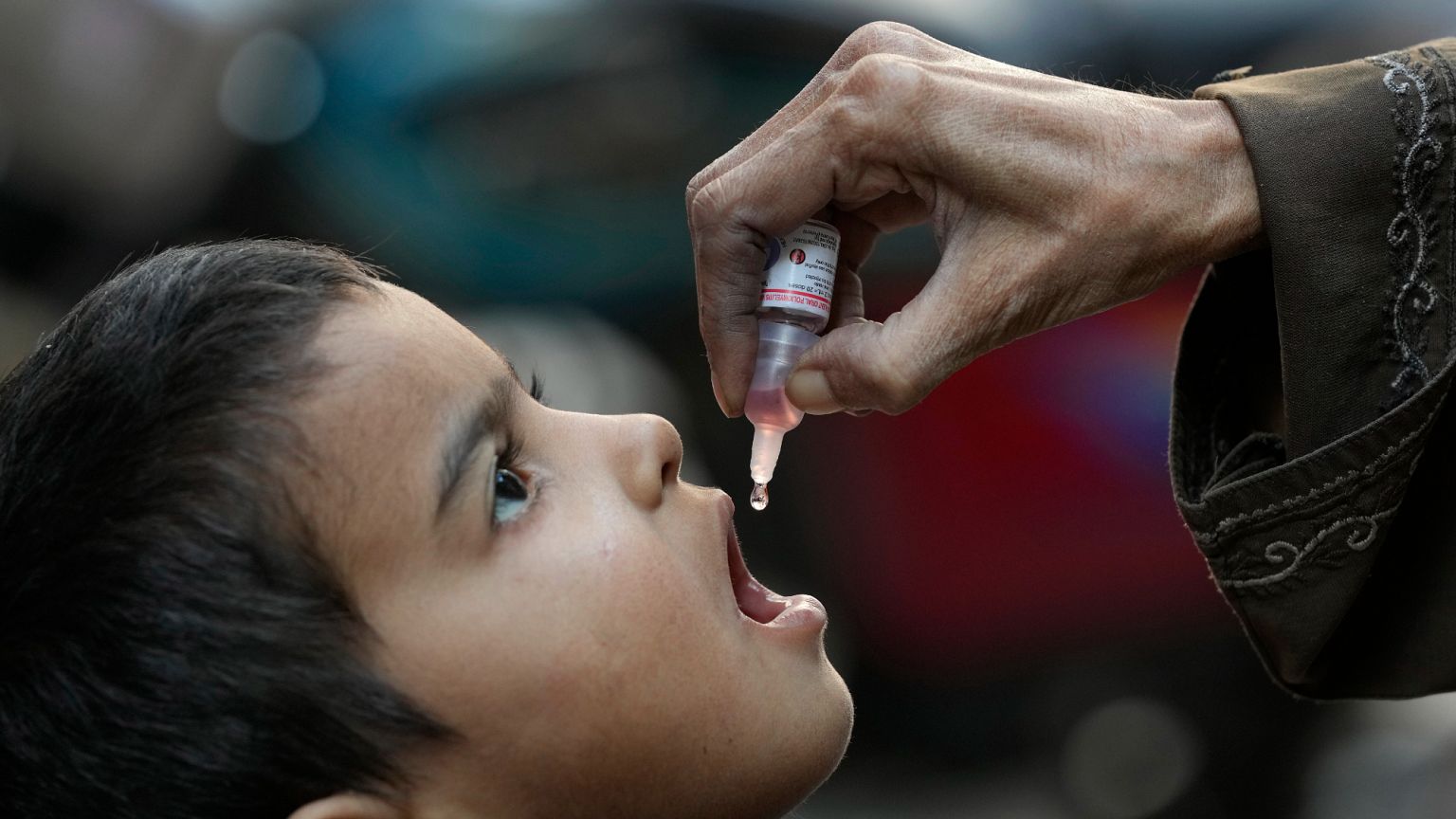Health
Investigation Reveals Challenges in Global Polio Eradication Efforts

A recent investigation highlights significant obstacles hindering the global fight against polio, revealing that issues such as fake immunisation records, an imperfect vaccine, and leadership missteps have contributed to the disease’s resurgence. For nearly four decades, the World Health Organization (WHO) and its partners have worked to eliminate polio, a debilitating disease that has affected humans for millennia. Despite a staggering decrease of over 99 percent in global cases, polio remains entrenched in parts of Afghanistan and Pakistan.
The WHO and its collaborators in the Global Polio Eradication Initiative have faced setbacks due to mismanagement and what insiders term an unyielding commitment to outdated strategies and a problematic oral vaccine. Internal documents obtained by the Associated Press (AP) reveal that local workers have raised concerns about polio vaccination efforts as early as 2017. Reports indicate alarming practices, including falsified immunisation records and untrained individuals administering vaccines.
Documented Issues with Vaccination Campaigns
Internal reviews conducted by the WHO, focusing on polio immunisation efforts in Afghanistan and Pakistan over the past decade, reveal a series of grave issues. Documents provided to AP by current and former staffers indicate that vaccination teams have operated under significant constraints. For instance, a report from Kandahar noted that teams worked in a rushed manner, lacking proper monitoring plans. In Nawzad, a team managed to cover only half of the intended area in 2017, missing 250 households entirely.
Health officials in these regions face numerous challenges, including cultural barriers, misinformation regarding vaccines, and widespread poverty. Sughra Ayaz, a vaccination worker in Pakistan, has spent the last decade urging families to immunise their children. She reports that some families prioritize basic needs over vaccination, while others harbor unfounded fears that oral vaccines may sterilize their children. Ayaz has witnessed instances where managers instructed workers to falsely report immunisations, reflecting a troubling trend of dishonesty in the campaign.
Concerns Surrounding the Oral Vaccine
Despite its effectiveness, the oral vaccine poses unique challenges. Although generally safe, it can, in very rare cases, lead to paralysis in children. In even rarer instances, the live virus within the oral vaccine can mutate, causing new outbreaks in areas with low vaccination rates. Most global polio cases reported since 2021 have been linked to the oral vaccine, with at least 98 cases documented this year.
Many public health experts advocate for a reevaluation of the oral vaccine’s role in the eradication strategy. The injectable vaccine, which does not contain live virus, is deemed safer but is more expensive and requires additional training for administration. Despite these recommendations, more than two dozen current and former senior polio officials have voiced concerns that agencies involved remain reluctant to adapt their strategies to address these challenges.
Dr. T. Jacob John, a former WHO scientist, has repeatedly called for a “major course correction,” emphasizing that the WHO is simultaneously creating polio cases while attempting to control them. In response, Dr. Jamal Ahmed, WHO’s polio director, maintains that the oral vaccine is a “core pillar” of the eradication strategy and has played a crucial role in achieving milestones in polio-free countries.
Critics highlight the lack of accountability within the polio eradication efforts. Dr. Tom Frieden, who serves on an independent board reviewing the initiative, noted that despite regular reports on program failures since 2011, little has changed. With an annual budget of about $1 billion (EUR 868 million), polio eradication ranks among the most costly public health endeavors, and WHO officials privately acknowledge that sustaining funding will be challenging without demonstrable progress.
Vaccine workers and health officials also contend that campaign leadership struggles to understand the complexities faced in the field. Cultural barriers, misinformation, and poverty continue to hamper door-to-door vaccination efforts. Many families cling to unfounded beliefs about the vaccine, complicating outreach. In a mountainous region of southeastern Afghanistan, one mother expressed her desire to vaccinate her children but stated that her husband had instructed the family to reject the vaccine out of fear it might harm their fertility.
As the WHO and its partners continue their efforts to eradicate polio, the path forward remains fraught with challenges. The need for innovative approaches and transparent strategies is more pressing than ever for the health of children in vulnerable regions.
-

 Top Stories3 months ago
Top Stories3 months agoTributes Surge for 9-Year-Old Leon Briody After Cancer Battle
-

 Entertainment4 months ago
Entertainment4 months agoAimee Osbourne Joins Family for Emotional Tribute to Ozzy
-

 Politics4 months ago
Politics4 months agoDanny Healy-Rae Considers Complaint After Altercation with Garda
-

 Top Stories4 months ago
Top Stories4 months agoIreland Enjoys Summer Heat as Hurricane Erin Approaches Atlantic
-

 World5 months ago
World5 months agoHawaii Commemorates 80 Years Since Hiroshima Bombing with Ceremony
-

 Top Stories3 months ago
Top Stories3 months agoNewcastle West Woman Patricia Foley Found Safe After Urgent Search
-

 Top Stories5 months ago
Top Stories5 months agoFianna Fáil TDs Urgently Consider Maire Geoghegan-Quinn for Presidency
-

 World5 months ago
World5 months agoCouple Convicted of Murdering Two-Year-Old Grandson in Wales
-

 World5 months ago
World5 months agoGaza Aid Distribution Tragedy: 20 Killed Amid Ongoing Violence
-

 World5 months ago
World5 months agoAristocrat Constance Marten and Partner Convicted of Infant Murder
-

 Top Stories4 months ago
Top Stories4 months agoClimbing Errigal: A Must-Do Summer Adventure in Donegal
-

 Top Stories4 months ago
Top Stories4 months agoHike Donegal’s Errigal Mountain NOW for Unforgettable Summer Views









